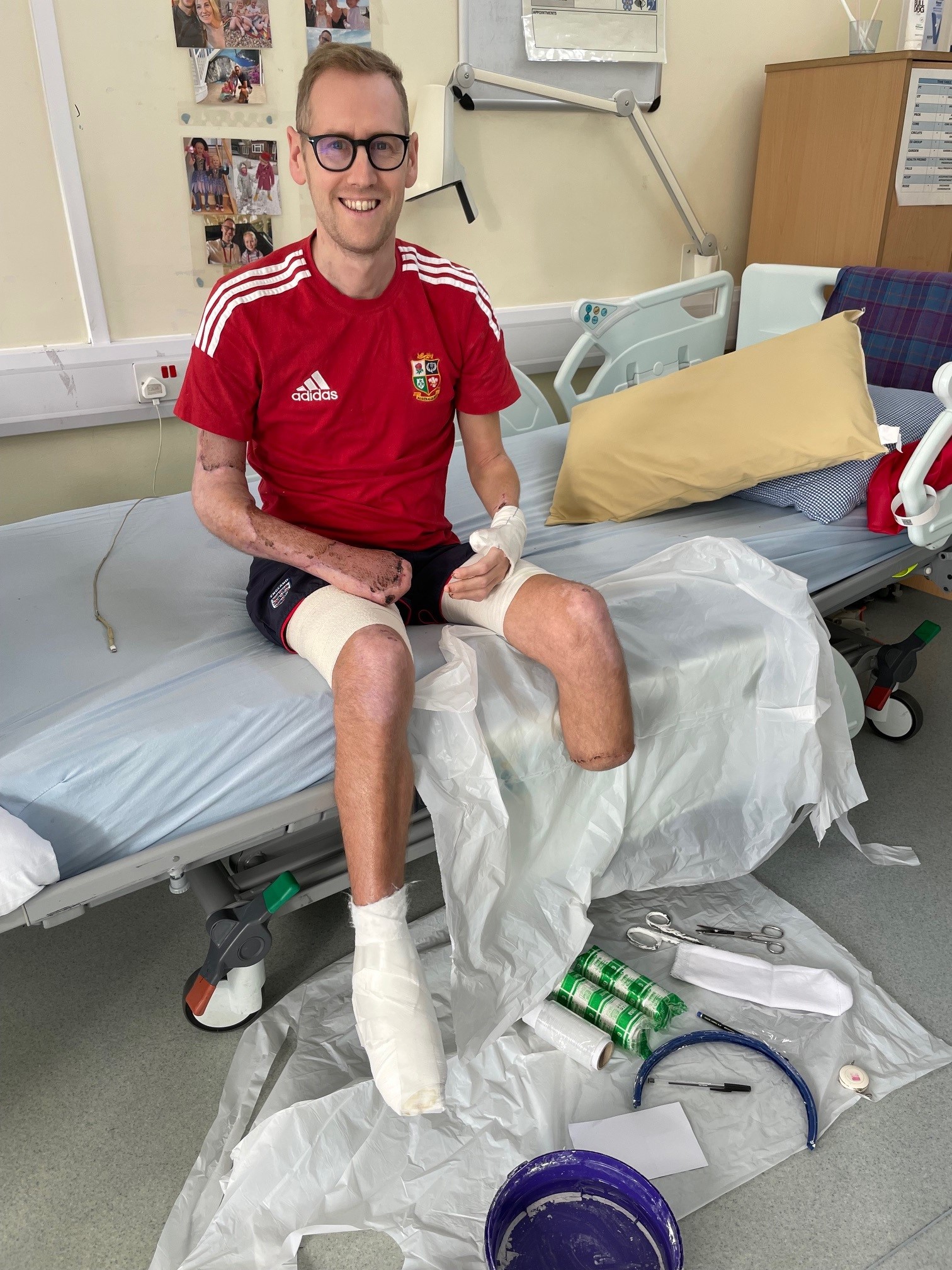September is Sepsis Awareness Month, raising awareness of an often misunderstood but potentially deadly medical condition.
Many people believe sepsis to be another term for blood poisoning, but in fact it is a hard to spot but life-threatening body-wide response to an infection.
Sepsis occurs when chemicals released into the bloodstream to fight an infection trigger inflammatory responses throughout the body.
The condition can cause what is known as ‘septic shock’, a dramatic drop in blood pressure that can damage the vital organs and, when the damage is severe, it can lead to death.
Symptoms to look out for include acting confused, slurred speech, blue, grey, pale or blotchy skin, a rash that does not fade when you roll a glass over it, difficulty breathing, breathlessness or breathing very fast.
Early treatment of sepsis with antibiotics can therefore save lives - as it did for West Ham United Fan Advisory Board (FAB) Claret Member representative James Brown.
The 41-year-old married father of two daughters shared his experience of sepsis - contracted after being bitten by an insect while on holiday - and the life-saving treatment to highlight the importance of Sepsis Awareness Month.
James, before we talk about your experience with sepsis, how did you come to be a West Ham United supporter?
“There have been a few West Ham fans in my family tree, and having been born in Basildon, it was one of the main clubs to support. I saw them quite early on TV, and going to the local sports shop in Pitsea to get my first kit was just the best. The classic BAC Windows home kit. The first time I saw West Ham live was a pre-season friendly at Southend United, and my first game at the Boleyn was against Manchester United - sadly a 2-0 loss.”
What are your favourite Hammers memories?
“My favourite player growing up was Tony Cottee, and I remember the formidable duo of John Hartson and Paul Kitson. The final game at the Boleyn against Man U was unbelievable - a fitting turnaround given my first game there was a loss to Man U. Watching some of the players light up the London Stadium has been exciting, seeing [Dimitri] Payet and [Marko] Arnautović boss opposition teams, [Manuel] Lanzini, [Pablo] Fornals and obviously the strong and reassuring presence of Mark Noble. Jarrod Bowen is another level! The atmosphere on the European nights was also something to behold. Let’s hope we get back there! My first game back after sepsis was against Fulham last season - it was great to be back!”

How did you fall ill?
“I fell ill in October 2023 whilst on holiday in Portugal. I had some form of insect bite, but seemingly nothing much, and my bicep started to swell up. I noticed my heart rate was very high at night - reaching over 95 bpm whilst asleep, which was twice the normal rate. I started to lose energy, had a temperature and then started to vomit. This was all over the course of two days. We travelled home as planned, but I felt awful. When we landed at Stansted and had got through Passport Control, I really lacked energy, so I sought First Aid. They took one look at me and called an ambulance crew.”
What was the experience of having sepsis like?
“Awful! I’ve never felt so ill, and once I got to A&E at Princess Alexandra Hospital, Harlow, I was in or approaching septic shock. I was shivering and over time just felt pain in my body. I had a bruise start to appear on the inside of my bicep, and I knew that wasn’t a good sign! I was operated on that night and then spent two weeks in an induced coma. When I came around, my feet and one hand were black, and one arm was fully wrapped due to skin debridement. All my muscle had gone!”
How and where were you treated?
“Initially I was treated at Princess Alexandra Hospital, Harlow, where I spent four weeks in Intensive Care. All of the staff were absolutely incredible. That’s something I will never forget. Then I moved to St Thomas’ in London, where I spent two-and-a-half months and had 20 operations. Again, the staff were amazing! Following that stay, I moved to the Amputee Rehabilitation Unit (ARU) in Lambeth, where I received my first prosthetic and learnt to walk again. I stayed there for six weeks, and they really do great work for people.”

How long did it take to recover?
“Having left the ARU, I spent two months at home getting my energy back and trying to recover my grip and walking. My energy levels were very low, and I started a phased return to work in June 2024, so eight months after having left to go on holiday! My employer, Ricoh, is a company that has incredible people, and I could not have received better support. I’d say it took 12-15 months for energy levels to really return.”
Have there been any lasting effects?
“Unfortunately, yes. I have had a below-knee amputation on my left leg, the toes of my right foot removed and the fingers on my right hand removed, plus skin grafts on my hand and arm. But I am now getting used to my body and finding a new normal, and it could have been so much worse.”
What would your message be to other West Ham supporters in Sepsis Awareness Month?
“I think we all know West Ham has special fans where family values are strong. We all want to protect our friends and families. Some 48,000 people died of sepsis in the UK last year - have a look around the London Stadium to put that number into perspective. The symptoms of sepsis are easy to miss, but awareness and ruling sepsis out early are key. If you, or someone you know, has a form of infection, a swelling or cut that doesn’t heal and other symptoms follow, such as high heart rate, sickness and/or low blood pressure, seek medical attention immediately.”
“Harry Redknapp is an Ambassador for the UK Sepsis Trust - for more information to help you recognise the symptoms of sepsis, check out their website HERE.”



